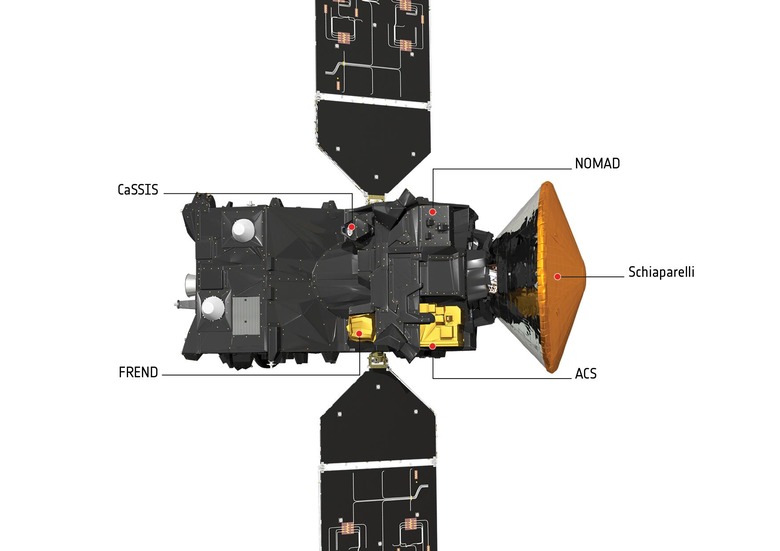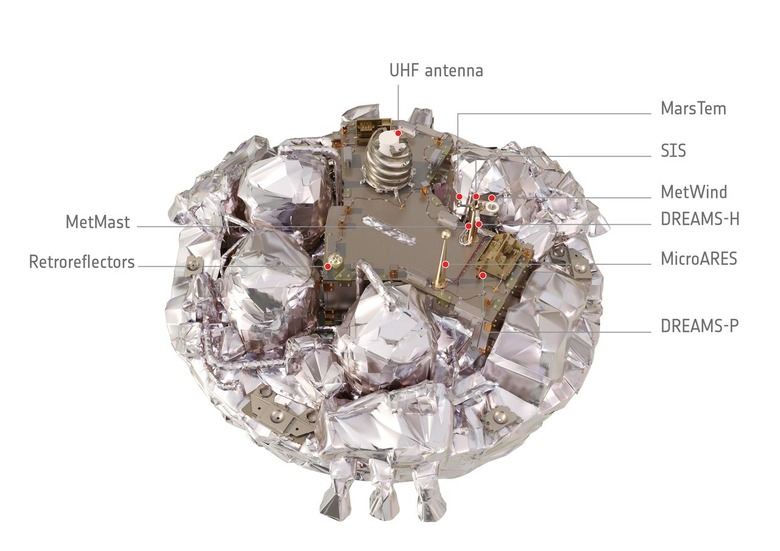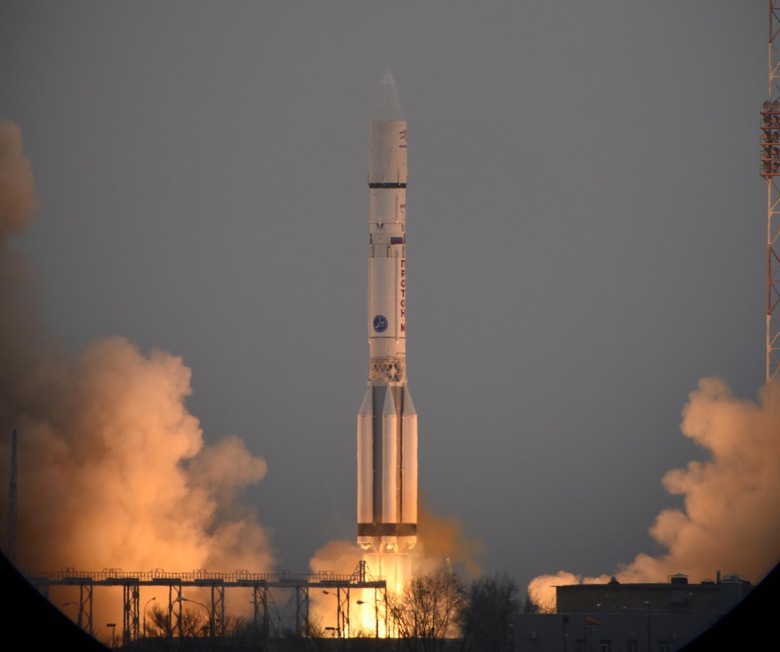ExoMars 2016 Is Go As Rocket Blasts Off For Martian Mission
The European Space Agency's mission to Mars has successfully begun, though it'll be seven months before the Proton rocket reaches the red planet. ExoMars 2016 aims to sift through the Martian atmosphere in search of methane and other trace gases which, the scientists suggest, might indicate that there are active biological or geological processes underway on the distant planet.
The Trace Gas Orbiter is responsible for figuring that out, designed by the ESA and packed full of European and Russian instruments. Since it won't be until October that the rocket actually reaches Mars, and indeed December before the satellite actually starts its investigation, we'll have to wait a while to hear just what's found.

The orbiter's mission itself is expected to run for five years, while simultaneously acting as a relay link for the second half of the EcoMars 2016 project.
That's because it'll also be a working test for several key technologies that will be vital for future human trips to Mars, including landing options. Three days before the orbiter gets to the Martian atmosphere, the Schiaparelli entry, descent and landing demonstrator module will be deployed and – if all goes to plan – touch down on the planet.

Unlike NASA's Curiosity rover, however, Schiaparelli's mission isn't expected to last long. Since it only has its onboard batteries to power it, not solar panels, some of those experiments will run at most for eight Martian days (each of which is a little shy of 24 hours, 40 minutes).
All the same, the ESA is enthusiastic about the possibilities. Sensors will track factors like pressure and heat on atmospheric entry, before dust analysis, humidity, temperature, atmospheric electrification, and other factors are measured on the ground.
Altogether they'll help assess how well the new thermal shield materials perform, the lander's parachute, a new radar Doppler altimeter, and a liquid propulsion final braking system.

Of course, first those payloads have to make it to Mars, and the launch earlier today from Kazakhstan is a major step in that journey. The Proton rocket blasted off at 10:30 Central European Time.
We won't have to wait too long for the first scientific tests, mind. In around six weeks time, for instance, a set of twin Electra UHF (ultra-high frequency) radios provided for the mission by NASA will be powered up, designed by the American space agency's Jet Propulsion Laboratory to improve communications between a planet-based robot and an orbiting relay.
For instance, the data rate is automatically adjusted when the orbiter is directly overhead for maximum bandwidth, then scaled back when the distances increase as the satellite gets nearer the horizon. An earlier version of the radio is used by the Curiosity rover, but the ESA's system is predicted to be roughly twice as strong.
